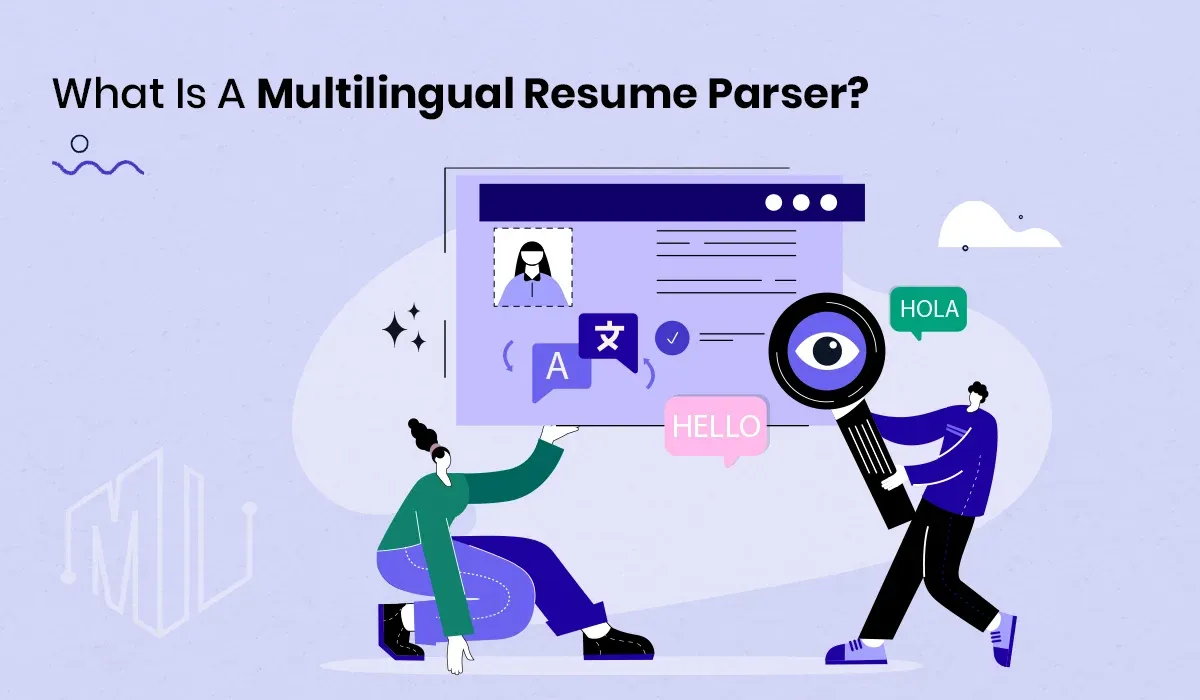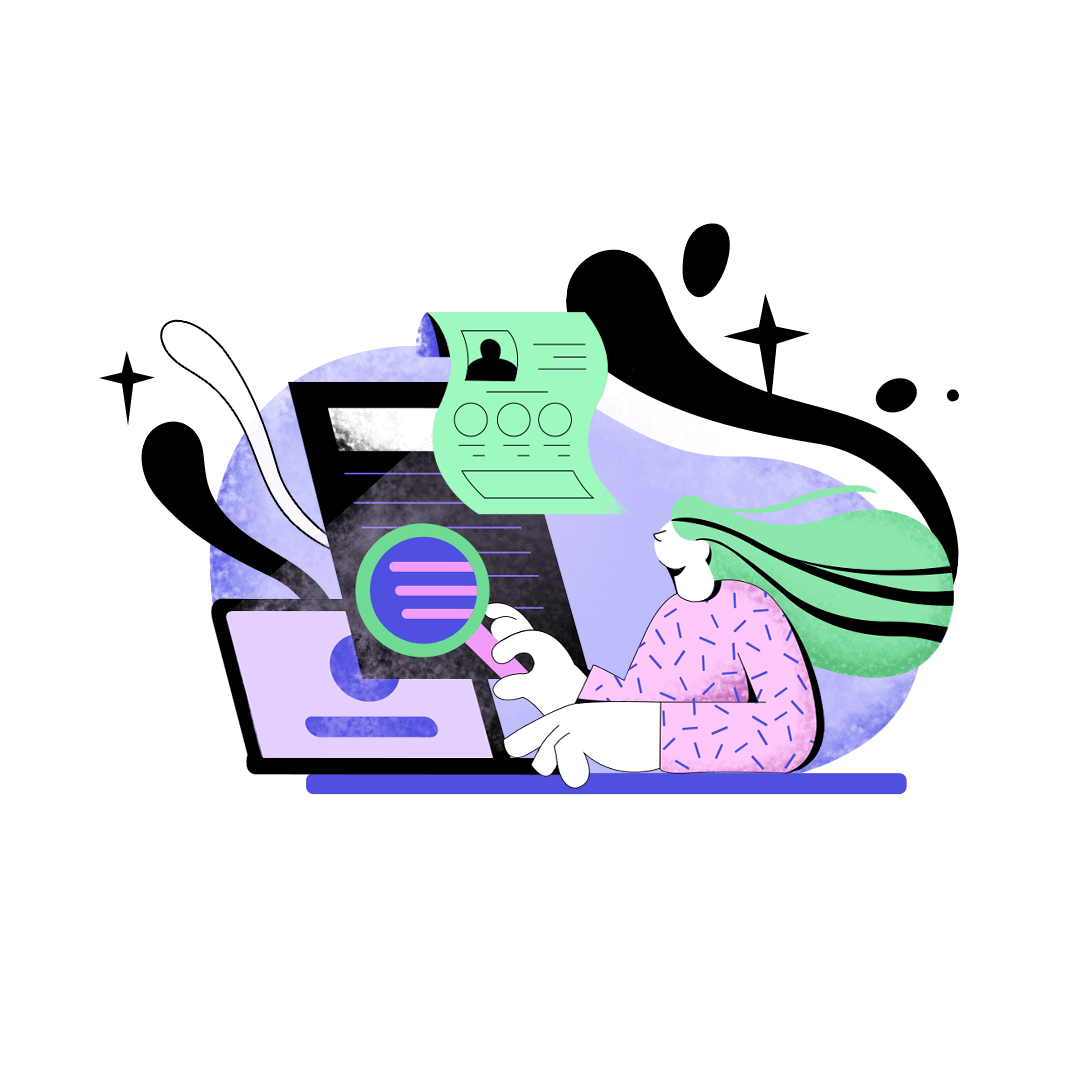What Is a Multilingual Resume Parser and Why Do You Need One?
Discover how a Multilingual Resume Parser can transform your hiring process by effortlessly extracting data from resumes in various languages, enhancing candidate sourcing, and improving the efficiency of your recruitment strategy. Perfect for global businesses.

In today's globalized job market, efficiently processing and understanding resumes in multiple languages has become increasingly crucial. This is where a multilingual resume parser becomes an invaluable tool. A resume parser, in its essence, is a technology that automates the process of extracting and classifying information from resumes. This multilingual technology transcends language barriers, enabling recruiters and hiring professionals to analyze and interpret resumes submitted in various languages with ease and accuracy.
Integrating multilingual capabilities into a resume parser significantly advances the recruitment technology landscape. It allows for a more inclusive and diverse talent acquisition process, as candidates can submit their resumes in the language they are most comfortable with, without worrying about language constraints. This not only streamlines the recruitment process but also enhances the candidate experience.
✨ Unleash the Power of AI with MagicalAPI!
Whether you’re optimizing YouTube content, extracting LinkedIn data, or evaluating resumes, MagicalAPI is your one-stop solution! Discover the diverse range of AI services tailored to meet your every need. Dive in and elevate your digital experience today!

What is a Multilingual Resume Parser?
A multilingual resume parser is a sophisticated piece of technology that plays a pivotal role in modern recruitment processes. It's a type of software that automates the extraction, interpretation, and storage of information from resumes in various languages.
This advanced tool is not limited to understanding just one language but is equipped to parse and analyze data from resumes written in multiple languages, making it an indispensable asset for global companies and multicultural work environments.
At its core, a multilingual resume parser utilizes natural language processing (NLP) and machine learning algorithms efficiently processing and understanding intelligently and accurately extract relevant information such as personal details, educational background, work experience, skills, and other pertinent data from resumes. The uniqueness of this technology lies in its ability to understand and process linguistic nuances, idiomatic expressions, and cultural variances found in different languages.
The sophistication of a multilingual resume parser lies in its linguistic versatility. It can seamlessly interpret information from a variety of languages, ensuring that the meaning and context are not lost in translation. This capability is crucial for organizations that attract talent from across the globe, as it allows them to process applications more efficiently and fairly, regardless of the language in which the resume is submitted.
Another key feature of a multilingual resume parser is its ability to standardize and categorize the extracted data. This ensures that information from resumes in different languages is uniformly structured, making it easier for recruiters and hiring managers to search, filter, and compare candidates from diverse linguistic backgrounds.
How Multilingual Resume Parser Works?
The workings of a multilingual resume parser are rooted in advanced technologies such as natural language processing (NLP), machine learning, and artificial intelligence. These technologies enable the parser to efficiently process, understand, and manage resumes written in different languages. Let's break down the process into key steps to understand how it functions:
- Extraction: When a resume is submitted, the resume parser begins by scanning and extracting textual data from the document. This includes personal information, educational background, professional experience, skills, and more. The extraction process is sophisticated enough to handle various formats and layouts commonly used in resumes.
- Language Detection and Translation: The parser identifies the language or languages in which the resume is written. This step is crucial in a multilingual setting. If necessary, the parser can translate the content into a primary language to standardize the data processing. This translation is done with a high degree of accuracy to maintain the integrity of the original information.
- Data Interpretation: Utilizing NLP, the parser interprets the data. This involves understanding the contextual meaning of words and phrases, especially important for idiomatic expressions or industry-specific jargon that may vary across languages.
- Classification and Categorization: After interpreting the data, the parser categorizes and organizes it into predefined fields, such as education, work experience, skills, and contact information. This step transforms the raw data into a structured format that's easy to navigate and analyze.
- Integration with Database or Applicant Tracking System (ATS): The structured data is then integrated into the company's database or ATS. This allows for efficient searching, filtering, and comparison of candidates from diverse linguistic backgrounds.
- Analysis and Decision-Making: Finally, recruiters and hiring managers use this processed information to make informed decisions. The parser's ability to provide a uniform structure for resumes in multiple languages streamlines the decision-making process, ensuring a fair and efficient evaluation of candidates.
In essence, a multilingual resume parser automates the tedious and time-consuming task of sifting through resumes in various languages. It ensures accuracy, efficiency, and fairness in the recruitment process, making it an invaluable asset for global companies looking to diversify their workforce.
Benefits of Multilingual Resume Parsing in Recruitment
The adoption of a multilingual resume parser in the recruitment process brings a multitude of benefits, revolutionizing the way organizations handle job applications. This technology not only streamlines the hiring process but also enhances the quality of recruitment decisions. Here are some key benefits:
- Efficiency in Handling High-Volume Applications: One of the primary advantages of a resume parser is its ability to process a large number of resumes quickly and accurately. For organizations receiving applications from all over the world, a multilingual parser can handle various languages, significantly reducing the time and effort required to manually sort and evaluate each resume.
- Improved Candidate Experience: By allowing candidates to submit their resumes in their native language, companies create a more inclusive and candidate-friendly application process. This flexibility can increase the diversity of the applicant pool and enhance the employer's brand image as an inclusive workplace.
- Enhanced Accuracy and Reduced Bias: The use of a resume parser minimizes the risk of human error and unconscious bias in the initial screening phase. Standardizing the extraction and categorization of information, it ensures that candidates are evaluated based on their qualifications and experience, not language proficiency.
- Seamless Integration with ATS: Multilingual resume parsers are often designed to integrate smoothly with existing Applicant Tracking Systems (ATS), making it easier for recruiters to manage and analyze candidate data. This integration facilitates better organization and tracking of applications throughout the recruitment process.
- Data-Driven Decision Making: With structured and standardized data extracted by the resume parser, recruiters can make more informed decisions. They can easily compare qualifications, experience, and skills across a diverse range of candidates, leading to better hiring outcomes.
- Global Talent Acquisition: For companies looking to hire globally, a multilingual resume parser is essential. It enables them to effectively tap into international talent pools without language barriers, broadening their search for the best candidates regardless of their linguistic background.
- Legal Compliance and Fair Hiring Practices: In many regions, there are legal requirements for fair hiring practices. A resume parser helps in complying with these regulations by ensuring a non-discriminatory and uniform approach to resume screening.
In summary, the integration of a multilingual resume parser in the recruitment process brings immense value to organizations. It not only streamlines and enhances the efficiency of the hiring process but also promotes diversity, inclusivity, and fairness, which are key to building a strong and capable workforce in today's globalized business environment.

Why Do Businesses Need Multilingual Resume Parsing Software?
In an increasingly globalized business environment, the need for multilingual resume parsing software is more pronounced than ever. A multilingual resume parser not only simplifies the recruitment process but also aligns with the broader objectives of businesses in today's world. Here are several compelling reasons why businesses should consider implementing this technology:
- Access to a Global Talent Pool: With businesses expanding their operations across international borders, the workforce has become more diverse. A multilingual resume parser enables companies to efficiently process resumes from candidates around the world, breaking down language barriers and providing access to a wider talent pool.
- Enhanced Diversity and Inclusion: Diversity in the workplace has been linked to increased creativity, better problem-solving, and greater innovation. By using a resume parser that can handle multiple languages, businesses encourage applications from a diverse range of candidates, supporting a more inclusive recruitment strategy.
- Streamlined Recruitment Process: Manual processing of resumes is time-consuming and prone to errors, more so when dealing with different languages. A multilingual resume parser automates and standardizes this process, saving time and resources while ensuring accuracy and consistency in candidate evaluation.
- Improved Candidate Experience: Allowing candidates to submit resumes in their preferred language improves their experience and interaction with the company. A positive application process can enhance a company's reputation and attractiveness to top talent.
- Competitive Advantage in Talent Acquisition: In the competitive landscape of talent acquisition, speed and efficiency are key. A multilingual resume parser speeds up the screening process, enabling businesses to quickly identify and engage with the best candidates before their competitors.
- Compliance with International Hiring Standards: As businesses operate in different countries, they must adhere to various local and international hiring laws and regulations. A resume parser helps ensure compliance by providing a fair and unbiased system for resume screening.
- Data-Driven Insights for Better Hiring Decisions: A resume parser not only processes resumes but also provides valuable insights through data analysis. This can help businesses understand trends in talent acquisition and refine their recruitment strategies accordingly.
In conclusion, multilingual resume parsing software is an essential tool for businesses aiming to thrive in the global marketplace. It not only streamlines the recruitment process but also supports diversity and inclusivity, enhances candidate experience, and provides a competitive edge in talent acquisition. In the following sections, we'll delve deeper into how a resume parser can be integrated into your business's recruitment strategy to maximize its benefits.
Challenges and Limitations of Multilingual Resume Parsing Software
While multilingual resume parsers offer significant advantages in the recruitment process, they are not without their challenges and limitations. Understanding these factors is essential for businesses to effectively implement and utilize this technology.
- Complexity of Language Processing: One of the primary challenges is the complexity involved in processing multiple languages. Each language has its unique grammatical rules, idiomatic expressions, and nuances. Ensuring the resume parser accurately interprets and translates these variances is a significant technological challenge.
- Cultural Variations in Resume Formats: Resumes differ not only in language but also in format and content structure based on cultural norms. A resume parser must be sophisticated enough to recognize and adapt to these variations to ensure accurate data extraction and categorization.
- Translation Accuracy: While advanced parsers use state-of-the-art translation technologies, there can still be discrepancies in translation accuracy, especially with less commonly spoken languages or dialects. This could potentially lead to misunderstandings or misinterpretations of the candidate’s information.
- Technological Limitations: Despite rapid advancements in AI and machine learning, there are still technological limitations to what resume parsers can achieve. They might struggle with overly complex or creative resume designs, handwritten notes, or non-standard file formats.
- Maintenance and Updates: Keeping the resume parser updated with the latest language processing algorithms and database structures can be resource-intensive. Continuous updates are necessary to maintain high levels of accuracy and efficiency.
- Data Privacy and Security: Handling personal data in resumes requires stringent data privacy and security measures. Ensuring the resume parser complies with international data protection regulations like GDPR is crucial to protect candidate privacy.
- Dependence on Quality of Input: The effectiveness of a resume parser is also dependent on the quality of the input. Poorly formatted resumes or those with unclear content can hamper the parser’s ability to extract data accurately.
In conclusion, while multilingual resume parsers are powerful tools for global talent acquisition, businesses must be aware of these challenges and limitations. Addressing these issues requires a combination of advanced technology, regular updates, and an understanding of the nuances of language and cultural differences. By acknowledging and working around these limitations, businesses can more effectively leverage resume parsers as part of their recruitment strategy.
Conclusion
As we have explored throughout this post, a multilingual resume parser is an invaluable tool in today's globalized job market. It bridges language barriers, enhances the efficiency of the recruitment process, and opens doors to a diverse pool of talent. The capabilities of this technology to process, interpret, and categorize data from resumes in multiple languages make it an indispensable asset for any organization looking to streamline its hiring process and embrace diversity.
At MagicalAPI, we understand the critical role that such technology plays in the modern recruitment landscape. That's why we offer our state-of-the-art Resume Parser service. Our solution is designed to meet the demands of diverse linguistic requirements and complex resume formats. By leveraging advanced AI and machine learning algorithms, our Resume Parser provides accurate and efficient processing of resumes from around the world.
In addition to our Resume Parser, we also offer a Resume Review service. This service complements the parsing process by providing detailed insights and feedback on resumes. It’s an excellent tool for candidates to improve their resumes and for employers to understand better the strengths and areas of improvement for potential hires.
FAQ
- What is a multilingual resume parser?
A multilingual resume parser is software that reads and extracts information from resumes in various languages using NLP and AI, converting data into a standardized format for easy management within an ATS, helping companies evaluate candidates from different linguistic backgrounds. - How does a multilingual resume parser work?
It scans resumes to extract data like personal information, education, and experience, detects the resume's language, translates if needed, and categorizes the information into fields for easy searching and comparison within an ATS.

Join to our community
By joining our Discord server, get assistance, and troubleshoot any challenges you may encounter while using our services.
Join us on Discord




